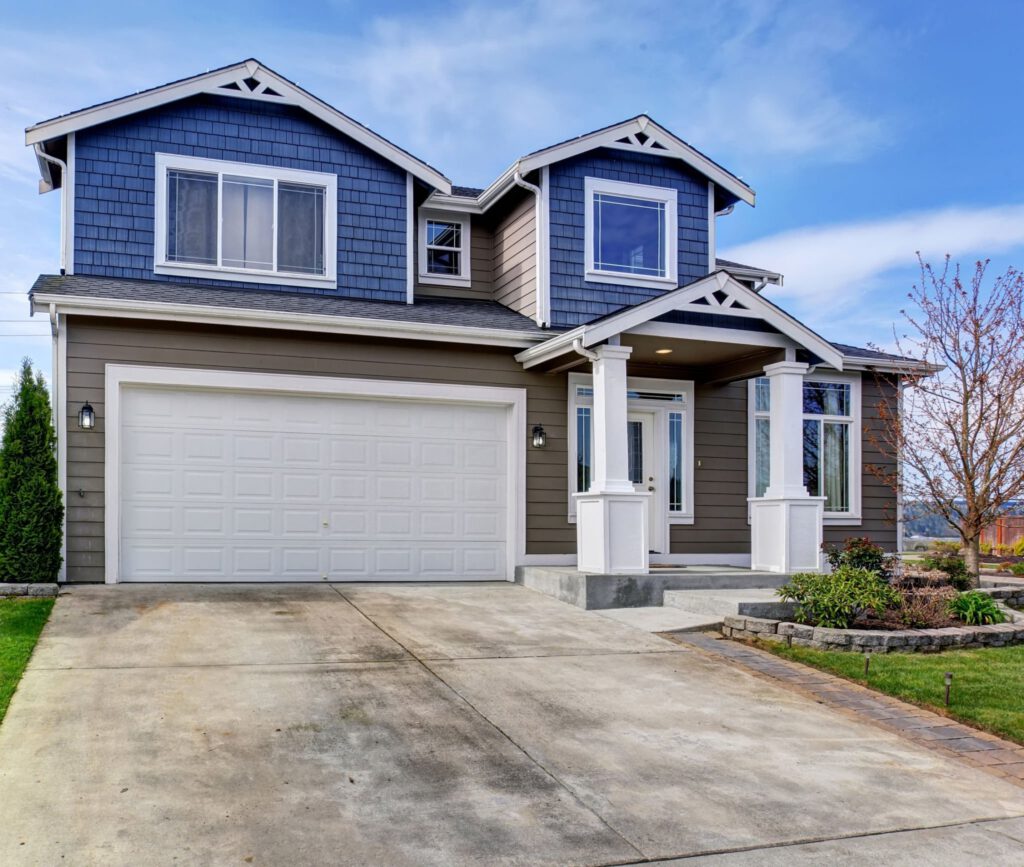Garage doors are a convenient and practical solution for securing your home and car, but they can also pose a significant safety hazard if not properly maintained. One of the most important safety features of a garage door is the sensor system, which helps to prevent accidents by reversing the door’s motion if something is blocking its path.
In this blog, we will explore the inner workings of garage door sensors, including how they work, the components that make them up, and tips for installation, maintenance, and garage door repair. By understanding how these sensors function, homeowners can ensure that their garage door is working safely and effectively.
What is a Garage Door Sensor?
A garage door sensor is an electronic safety device that is designed to prevent accidents by reversing the door’s motion if something is blocking its path. They use infrared technology to detect if anything is in the way of the door as it is closing, and if the sensor detects an object in the door’s path, it sends a signal to the opener to stop and reverse the door’s motion, preventing it from closing on the object. The sensor is typically located near the bottom of the door frame and it is connected to the opener, which receives the signal and activates the door’s reversing mechanism. Garage door sensors are now a standard safety feature in most modern garage door openers in Oklahoma City.
What are the signs that the garage door sensor is bad?
There are several signs that may indicate that your garage door sensor is bad and needs to be repaired or replaced. Some common signs include:
- The garage door won’t close: If the sensors are not functioning properly, the door will not close and may reverse direction when attempting to do so.
- The sensors are not aligned: The sensors should be aligned properly so that the infrared beam is pointing directly at the other sensor. If they are not aligned, the door will not close.
- The sensors are dirty or obstructed: Dust, dirt, or debris can accumulate on the sensors, blocking the infrared beam and preventing the garage door from closing.
- The sensors are blinking or flashing: If the sensors are blinking or flashing, it may indicate a problem with the wiring or the control board.
- The sensors are making strange noises: A humming or buzzing noise coming from the sensors may indicate a problem with the sensors.
If you suspect that your garage door sensor is bad, it’s best to have it checked by a professional. Contact CCM Overhead Doors can diagnose the problem and make any necessary garage door sensor repairs or replacements in Oklahoma City.
Components of Garage Door Sensors
Garage door sensors typically consist of two main components: the transmitter and the receiver.
The transmitter – This is typically a small, rectangular box that is mounted on one side of the garage door opening, near the bottom of the door. It emits an infrared or laser beam that is directed across the opening, toward the other sensor. The transmitter is one of the two main components of a garage door sensor. It is typically a small, rectangular box that is mounted on one side of the garage door opening, near the bottom of the door. Its main function is to emit an infrared or laser beam that is directed across the opening, toward the other sensor, the receiver.
The transmitter typically includes an infrared or laser diode, which is the component that emits the beam. The diode is powered by a small battery or a connection to the garage door opener’s power supply. The transmitter also includes a circuit board, which controls the diode and communicates with the receiver and the control box.
When the transmitter is working properly, it emits a steady beam of infrared or laser light that is directed across the garage door opening, toward the receiver. If the beam is interrupted by an object or person in the way, the transmitter sends a signal to the control box to stop or reverse the door.
It’s important to note that the transmitter should be aligned properly with the receiver. This means that the infrared or laser beam should be pointing directly at the other sensor. If the sensors are not properly aligned, the door will not close and may reverse direction when attempting to do so.
If you suspect that the transmitter is not working properly, it is best to have it checked by a professional. Contact CCM Overhead Doors can diagnose the problem and make any necessary garage door sensor repairs or replacements in Oklahoma City. We can diagnose the problem and make any necessary repairs or replacements.
The Receiver – This is typically a similar-looking box, which is mounted on the other side of the garage door opening, also near the bottom of the door. It receives the infrared or laser beam and sends a signal to the control box to stop or reverse the door if the beam is interrupted.
The receiver is the other main component of a garage door sensor. It is typically a similar-looking box, which is mounted on the other side of the garage door opening, also near the bottom of the door. Its main function is to receive the infrared or laser beam emitted by the transmitter and send a signal to the control box to stop or reverse the door if the beam is interrupted.
The receiver typically includes a photocell or a photodetector, which is the component that detects the infrared or laser beam. The photocell is connected to a circuit board, which controls the photocell and communicates with the transmitter and the control box.
When the receiver is working properly, it detects the steady beam of infrared or laser light emitted by the transmitter and sends a signal to the control box to keep the door moving. If the beam is interrupted by an object or person in the way, the receiver sends a signal to the control box to stop or reverse the garage door.

The Importance of Garage Door Sensors Components
It’s important to note that the receiver should be aligned properly with the transmitter. This means that the infrared or laser beam should be pointing directly at the other sensor. If the sensors are not properly aligned, the door will not close and may reverse direction when attempting to do so.
If you suspect that the garage door opener’s receiver is not working properly, it is best to have it checked by a professional specializing in garage door repair. They can diagnose the problem and make any necessary repairs or replacements. It’s worth noting that the receiver may include an LED light that indicates if the sensor is working properly; for example, if the light is on, it means the sensors are aligned and working well. If the light is blinking or off, it may indicate a problem with the sensor or the alignment.
Both the transmitter and receiver are connected to the control box, which is typically located near the opener motor and contains the circuit board, a power source, and the relay that controls the movement of the door.
The sensor may also include a LED light that indicates if the sensor is working properly, for example if the light is on, it means the sensors are aligned and working well, if the light is blinking or off, it may indicate a problem with the sensor or the alignment.
It’s worth noting that the new garage door sensors may also include additional features such as photo eyes, which can detect any obstacles in the way of the door in addition to detecting if the door is fully closed or open.
Installing Garage Door Sensors
- Installing garage door sensors is a relatively simple process that most homeowners can do themselves: This means that with some basic knowledge and tools, most homeowners can install the sensors without needing professional help.
- It typically involves mounting the sensors to the door frame: The installation process usually starts by mounting the sensors to the door frame, which is the place where the sensors are supposed to be installed, usually, this is done by screwing them into the frame.
- Connecting them to the opener: Once the sensors are mounted, the next step is to connect them to the opener, which is the device that controls the door. This is usually done by connecting wires from the sensors to the opener.
- Adjusting the sensitivity to ensure that the sensors are working properly: After the sensors are connected to the opener, it is important to adjust the sensitivity of the sensors to make sure that they are working properly. This can be done by using the adjustment screw on the sensor or through the opener’s control panel.
- If homeowners are not comfortable with the installation process, it’s best to consult a professional, especially when it comes to tasks like garage door repair. This is important to ensure that the sensors are installed correctly, and to avoid any potential problems or accidents.
What are the common types of obstructions that garage door sensors can detect?
The garage door sensor can detect a variety of different types of obstructions that may be in the way of the closing door. Some common types of obstructions that the sensors can detect include:
- People: The sensors can detect the presence of people, including children or pets, who may be in the way of the closing door.
- Cars or other vehicles: The sensors can detect the presence of cars or other vehicles that may be parked in the garage or blocking the door from closing.
- Bicycles or other large objects: The sensors can detect the presence of bicycles, lawnmowers, or other large objects that may be in the way of the closing door.
- Debris: The sensors can detect the presence of debris, such as leaves, branches, or other objects that may be blocking the door from closing.
- Water or other liquids: The sensors can detect the presence of water or other liquids on the ground that may be blocking the door from closing.
It’s important to note that garage door sensors are not foolproof and can be affected by different factors like dust, dirt, or any other debris. Regular cleaning and maintenance can help to ensure that the sensors are functioning properly.
Garage Door Sensor Maintenance
Maintaining your garage door sensors and addressing any alignment issues is an important step in ensuring the safety and proper functioning of your garage door. Regular maintenance can help prevent accidents and ensure that the sensors, much like a well-maintained system, are working correctly. One of the most important things to check is the alignment of the transmitter and receiver. If they are not properly aligned, the sensor may not function correctly, resulting in false alarms or the door not reversing when it should. Additionally, it is crucial to check that the sensors are clean and free of debris, as dirt and dust can accumulate over time and interfere with the sensor’s ability to detect objects. If you encounter any issues during your inspection, prompt garage door repair is recommended to address the problems and maintain the overall functionality of your garage door system.
It is also recommended to test the sensors by placing an object in the door’s path and seeing if the door stops and reverses when it reaches the object. This will help you to make sure that the sensors are working correctly and that the door is reversing properly when it encounters an obstruction. If the sensor is not functioning properly, it may need to be cleaned or adjusted, or it may need to be replaced. By performing regular maintenance, you can ensure that your garage door is working safely and effectively and that you and your family are protected from potential accidents.
Why Hire A Professional for your Garage Door Services?
Garage door sensors are an essential safety feature that helps to prevent accidents and injuries by reversing the door’s motion if something is blocking its path. Understanding how these sensors work, including their components, installation, and maintenance, can help homeowners ensure that their garage door is working safely and effectively. This article covered the inner workings of garage door sensors, including how they use infrared technology to detect objects in the door’s path, and what components make them up. We also discussed the importance of installation and maintenance to ensure proper function.In order to ensure that your garage door sensors are working safely, it is crucial to perform regular maintenance on your sensors and to address any issues that may arise. If you are not comfortable with the installation or maintenance process, it is best to consult a professional. Just contact CCM Overhead Doors the leading garage door contractor in [ City + State], and you can have peace of mind knowing that your garage door is taken care of properly.









